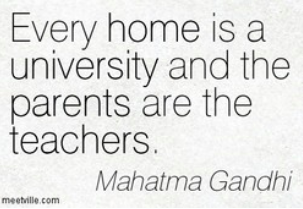When you've lived as long as I have lived, you are able to look back at the chapters in your life to what drove you at that time. Each of us experienced different drivers throughout our lives. I took that journey back today.
Family Joy and Creativity
As a very young child, I was driven by family joy and creativity. I loved our family's many joyful adventures and celebrations. With dozens of cousins, many aunts and uncles, and a fun-loving Dad and Mom, I had very joyful early years. On my own during those year, I spent lots of time playing all kinds of imagination games.
Curiosity
When I walked up those shiny mahogany steps of my old fashion school building, I thought I died and went to heaven. I LOVED school from my very first days in preschool and kindergarten. The experiences I had were life changing. I still remember holding the giant six-foot snake in pre-school, planting seeds in kindergarten, reading for the first time in first grade, paining a mural in second grade, learning my facts in third grade and so much more throughout the grades. I was a very curious child who loved to think, draw, write, and create. In fact, every night before I went to sleep, I drew stories on paper in my bed. Then I would hide those pads of paper under my bed. My favorite presents were paper and markers. I remember wishing for what we now know as the Internet when I was very little and I also wished for what has not been invented yet, the ability to morph yourself into other beings in order to experience other lifestyles. I remember driving by the big apartment buildings on the outer edge of New York City and wishing that I could live there for a short while to really understand what that was like.
Popularity
There came a time when I was driven by popularity. I wanted to be the popular girl, but I resisted the actions that many of the popular kids were involved in. I sat at the outskirts of spin-the-bottle games, cigarette and marijuana smoking, late nights of drinking on train bridges, rowdy concert trips, and other somewhat risque behavior. I didn't have the popular look of the time or the popular kid mindset either, yet like many my age, popularity stood front and center in my mind commanding hours of time.
Love
The quest for romance hit me early, but like popularity, that quest evaded me too. I didn't know where to start even though I had crushes on boys from my early years in elementary school and beyond. There were outside pressures with regard to finding a boyfriend which didn't make things easier. I spent a lot of time thinking about love, time, in hindsight, that would have been well directed towards my interests instead. It wasn't until my twenties that I began to happily find love, and now I've been married to my best friend for over thirty years.
Truth
The freedom of college led me to the question, "What is Truth?" I spent many a day seeking that answer in countless ways. I still love that question today and remain driven by it.
Good Living
Once I passed the expectations of my family to get a college education, I became driven by what it meant to live a good life. Like an architect, I set about researching, then designing, and working on living that perfect life. Of course no life is perfect, but since that time I've been striving to build the elements of good living with both success and failure too.
Teaching
From the early days of playing school in the basement of our house to being the kindergarten helper in fifth grade, I wanted to teach. Mostly I wanted to teach because I know how positively life changing a good education can be. I don't want children to suffer in their wonderful young years, but instead, I want children to understand their worth and potential. I have always wanted to be a person who strengthens children's ability to live good lives and teaching has given me a path to do that. Teaching children well still drives me today.
Family
From my earliest days I dreamed of being a mother. I used to pretend I was my little sibling's mom when I was young. I also played house a lot, and loved caring for children in my extended family, the neighborhood, and organizations I belonged to. As a mom, I have always been driven by being the best mom that I could be. Of course, as every parent knows, that's not an easy task. And like every other quest that has driven me over time, I met with both successes and failure in this realm. All in all though, I've put family first and I'm happy with the wonderful family my husband and I enjoy.
Home
Home has been a long term driver too. I've sought to create as warm and welcoming a home as I can. I continue to be driven by this quest.
Adventure
With time and money left, I am typically drawn to what I'd define as safe adventures. I'm a bit of a scaredy cat so I don't like to adventure in ways that put me or my loved ones at risk, but I do like to adventure into new places and events, particularly beautiful natural settings and events that include music, art, and inspiration.
Recently during the pandemic, I spent some time learning to palm read. I did that for fun, but wasn't surprised when my palm reading matched my life's quests and drivers. My list is quite ordinary, predictable, traditional, and in so many ways, that's who I am.
What are your drivers in life? What has not driven you? These drivers tell a lot about who we are and where we are going.









